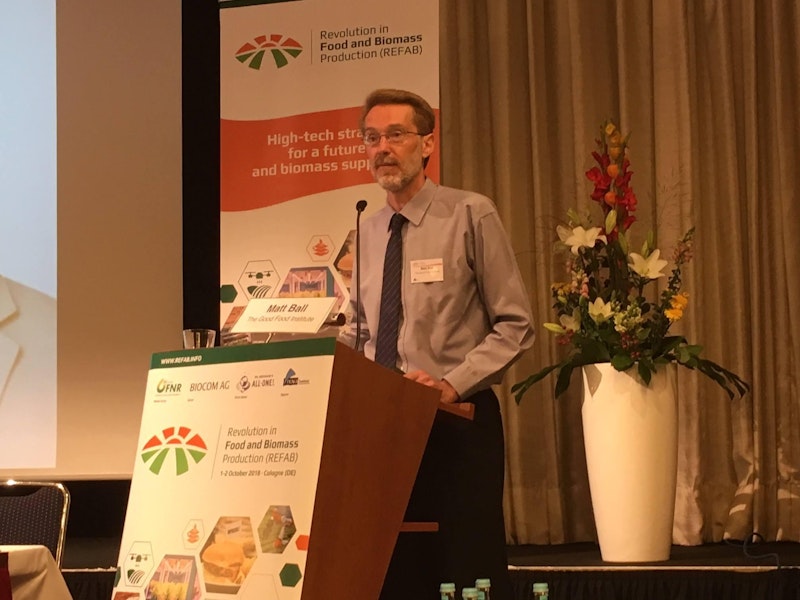While he's perhaps best known as a co-founder of Vegan Outreach, Matt Ball currently serves as senior media relations specialist at the Good Food Institute. The latter organization seeks to promote clean meat—which is grown from cells, without slaughtering animals. I recently interviewed Ball about this revolutionary technology.
Splice Today: How did you come to work at the Good Food Institute?
Matt Ball: I’ve collaborated with GFI’s Executive Director Bruce Friedrich for several decades, including writing a book together. We worked together at another organization when he left to co-found GFI. After that, I volunteered for GFI until I came here to work officially on Nov. 1, 2017.
ST: Explain the process of making clean meat in a way that a layperson would understand.
MB: If you think about how an animal grows, it starts with one cell that divides over and over, differentiating into different types of cells. There is nothing “magical” about how this works. Decades ago, doctors started growing human tissue—skin, cardiac cells—outside of a body for medical purposes. It’s the same process for clean meat. Cells simply do what they do naturally—they replicate. In the case of clean meat, they do so in a clean facility rather than as part of an animal. Depending on the cells’ surroundings—the composition of the nutrients given, the structure—they’ll develop into the desired types of cells. Muscle, fat, connective tissues. But none of the inputs have to go to an animal’s metabolism, or to growing brains, blood, and bone. Also, there are no intestines, so no feces or fecal contamination. All you get is clean meat.
ST: To what extent are animals currently involved in the process?
MB: Right now, a small sample of cells is used to get the initial cells for clean meat. These cells can be derived without any harm to an animal. For example, JUST took the cells they used for their first clean meat chicken from a chicken’s feather. Marie Gibbons, a GFI Fellow who recently worked in George Church’s famous Harvard lab, has worked with turkey cells. With access to the line of turkey cells she developed, clean meat producers could meet the world’s demand for turkey more than 40 times over. And that’s just with the technology we have today.
ST: How far away is clean meat from commercial release?
MB: I’d say we’re probably a year or two before someone will be able to buy clean meat somewhere. We’re probably five years from clean meat being like the Impossible Burger—available in some restaurants. It could be a decade before anyone could go into their grocery store and buy clean meat at a price that’s competitive with conventional meat. I’ll note that only three years ago, some of the best thinking on this topic thought that clean meat was multiple decades away. But shortly after these analyses, companies like Memphis Meats and Mosa Meat have met milestones previously thought to be much farther away.
ST: What do you think the food landscape will look like in 50 years?
MB: I was born in 1968, exactly 50 years ago. During that time, the food landscape in developed countries has changed mostly in terms of greater availability, variety, and choice. It’s likely that trend will continue, although I think it will necessarily slow. Humans can only cope with so many choices. In terms of meat, I think that by the time I turn 100, plant-based and clean meat will undercut conventional meat in price. Given that neither plant-based nor clean meat require using inputs to fuel metabolism or growing brains, blood, or bone, once they’re produced at scale, they’ll be inherently more efficient. This will allow plant-based and clean meat to transform the meat industry to these better forms of production. As Tom Hayes, then CEO of Tyson Foods said, “If we can grow the meat without the animal, why wouldn’t we?”
ST: So much of the clean-meat movement seems driven by scientists and venture capitalists. What can ordinary people do to push it forward?
MB: The most important thing you can do is to seek out the best plant-based meats you can find. Buy those and share them with friends, family, and colleagues. By giving the market a stronger signal of increased demand for better types of meat, we’ll encourage more investment in both plant-based and clean meat, which will accelerate these markets.

